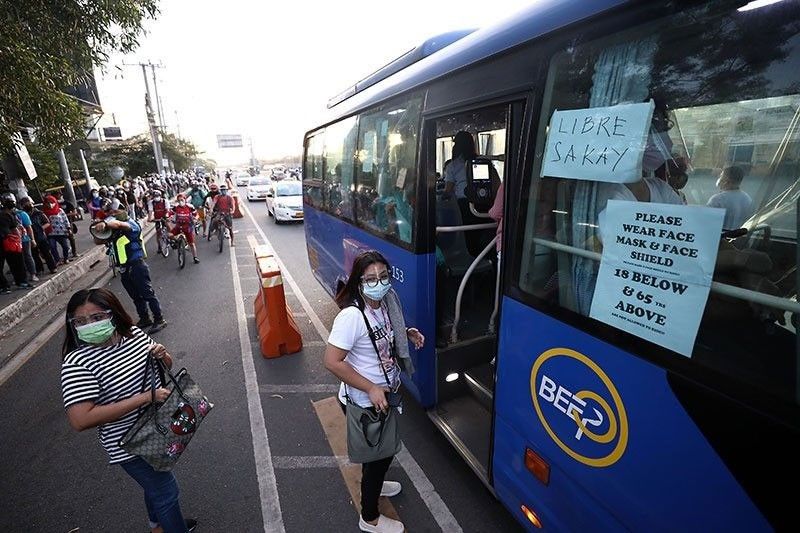A Comprehensive Examination of the Methods and Techniques for Effective Transit Marketing Campaigns
Transit advertising projects supply an unique possibility for brands to engage with varied audiences in dynamic settings. As we check out these vital components, it comes to be clear that the path to an impactful transit advertising strategy is both detailed and rewarding, increasing the question of just how ideal to browse these complexities for maximum brand name exposure.
Comprehending Target Demographics
Comprehending target demographics is crucial for the success of transit ad campaign (Transit Advertising Philippines). Identifying specific audience sections allows advertisers to tailor their messages successfully, making certain that the content resonates with the desired viewers. This technique boosts involvement and takes full advantage of roi
To successfully analyze target demographics, marketers must take into consideration several key aspects, including age, earnings degree, way of life, and occupation preferences. As an example, a campaign aimed at young experts may concentrate on ease and modernity, while one targeting families could emphasize security and integrity. In addition, geographic factors such as urban versus country setups can significantly influence customer behavior and preferences.
Information collection techniques such as surveys, focus teams, and social media analytics provide useful insights right into group fads and consumer routines. By leveraging this information, marketers can craft engaging narratives that line up with the values and requirements of their target market.
Inevitably, understanding target demographics not only notifies the strategic direction of transit marketing projects but additionally makes sure that sources are assigned effectively. This targeted method boosts the likelihood of accomplishing project purposes, promoting brand loyalty, and driving conversions.
Creative Style Techniques
Reliable communication with target demographics counts heavily on ingenious creative style methods in transportation advertising and marketing campaigns. To successfully catch attention in a jampacked visual atmosphere, developers should prioritize clearness and aesthetic impact. Utilizing high-contrast elements and vibrant shades can enhance visibility, making sure that messages are conveniently clear from a range.
Including dynamic imagery that resonates with the target market is important. Visual storytelling strategies can stimulate emotions and develop memorable associations with the brand name. Furthermore, critical usage of typography aids communicate crucial details quickly; ideal sizes and clear fonts additionally enhance readability.
Incorporating interactive components, such as QR codes or enhanced reality features, can involve commuters beyond passive observation (Transit Advertising Philippines). These strategies not only advertise customer communication however additionally connect the gap in between traditional advertising and marketing and electronic engagement
Additionally, making use of space creatively-- whether on bus wraps, transit sanctuaries, or subway advertisements-- can lead to innovative designs that damage the mold of conventional advertising. By accepting artistic creativity while maintaining brand uniformity, campaigns can foster a solid link with their target market, ultimately driving both recognition and activity. The integration of these layout techniques is paramount for attaining effective transit marketing results.
Strategic Placement Methods
Taking full advantage of the effect of transit advertising and marketing depends upon strategic placement approaches that make sure optimal visibility and involvement. Reliable placement entails recognizing and assessing high-traffic areas passenger demographics to recognize one of the most useful places for ad display screens. For example, positioning ads near entries and leaves of transit vehicles can record the focus of boarding and touching down guests, therefore enhancing direct exposure.
In addition, using both exterior and indoor surface areas of transportation lorries can substantially broaden reach. Outside ads, noticeable throughout commutes, involve pedestrians and find other motorists, while indoor ads target passengers in a restricted environment. In addition, putting advertisements in transportation hubs, see page such as bus terminals or train stations, enables for increased impacts as travelers shift between various settings of transport.
Timing is additionally critical; straightening the campaign launch with peak travel periods makes best use of target market interaction - Transit Advertising Philippines. In addition, leveraging electronic screens en route environments can assist in vibrant web content, boosting and offering real-time updates customer communication. By utilizing these calculated positioning methods, marketers can make certain that their transit ad campaign achieve optimal presence, reverberate with the target market, and eventually drive wanted outcomes

Measuring Project Efficiency
To evaluate the success of transit marketing campaign, it is vital to utilize a range of dimension methods that supply understandings into audience engagement and overall effectiveness. One primary method is using crucial efficiency indications (KPIs), such as reach, impressions, and interaction rates, which measure exactly how many people interacted and watched the advertisement with it.
Studies and focus groups can also contribute in determining customer perceptions and recall, permitting marketing professionals to understand the impact of their messaging. In addition, tracking site web traffic and social networks engagement throughout and after the campaign assists measure straight feedbacks to the advertising.
One more reliable strategy is utilizing location-based analytics, which can offer information on foot web traffic around particular transportation locations, supplying understandings right into whether the campaign successfully caught the focus of commuters. In addition, examining sales data can reveal correlations between transit marketing and enhanced revenue, providing tangible explanation evidence of a project's effectiveness.
Instance Studies of Success
Recognizing the efficiency of transportation advertising campaigns through measurement methods prepares for checking out real-world examples that highlight successful outcomes. One significant instance research study includes a nationwide beverage brand that utilized bus wraps in metropolitan areas. The campaign intended to boost brand visibility and sales during the summer season. By utilizing geo-targeted electronic advertisements and analytics, the brand name gauged a 30% rise in sales in regions where the covers were plainly displayed, showing the direct impact of transit advertising and marketing.
One more compelling instance comes from a regional nonprofit company that introduced a project on train platforms to advertise an area occasion. The use of straight interaction through innovation enhanced the project's reach and efficiency.

Conclusion
In summary, effective transit advertising campaigns necessitate a comprehensive strategy that incorporates an understanding of target demographics, cutting-edge layout strategies, and tactical placement. By prioritizing emotional interaction with strong visuals and optimizing exposure throughout optimal traveling times, brands can considerably improve their influence. Additionally, recurring measurement of project effectiveness through vital efficiency indicators and consumer feedback ensures continuous renovation. Collectively, these methods foster brand name existence and make the most of the roi en route marketing efforts.
Comprehending target demographics is critical for the success of transportation advertising and marketing projects.Efficient communication with target demographics depends heavily on innovative imaginative style strategies in transportation marketing campaigns. By employing these critical positioning methods, marketing professionals can make certain that their transit advertising and marketing projects attain optimal visibility, reverberate with the target audience, and eventually drive preferred outcomes.
Recognizing the efficiency of transit advertising projects with measurement methods lays the groundwork for checking out real-world examples that illustrate successful outcomes.In recap, successful transportation marketing campaigns necessitate a comprehensive strategy that integrates an understanding of target demographics, innovative layout methods, and calculated placement.
Comments on “Transit Advertising Philippines: Reach Countless Commuters Daily”